#that’s not sustainable
Explore tagged Tumblr posts
Text
I know this is the I Only Love And Trust My Mutuals website and trust me I love my mutuals but did you ever stop and think that a lot of us have been here for over a decade, and the vast majority of my mutuals now are former mutuals-in-law, people I met through blogs I’d been following for YEARS?? it took us AGES to customize our dashboards to be this perfect—because it INEVITABLY takes a long time to build community!! people just joining tumblr now cannot immediately or easily find or create what we have!!! expecting them to is simply foolish!
#tumblr is really really fun now—but it didn’t start being this fun until I’d been using the site for something like five years IF NOT LONGER#that’s not sustainable
87 notes
·
View notes
Note
hi! not original anon about Mike BUT I do love him. I’ve spoken to Mike a few times for a while and he seems to be a really good dude. I’m not inclined to share exactly what Mike said, but it sounds like he came into Brendon’s life when Brendon really needed it, and helped Brendon sort of see things differently, and he’s happy now. And for various reasons, I don’t think Mike has taken advantage of Brendon at all.
Well then that’s phenomenal! I’m glad! This could also be Mike Viola ghostwriting but I’ll choose to believe it isn’t 😂 look, I really don’t mean any harm whatsoever to Mike, nor do I care that much (only because it’s none of my business). My other answer to why I dislike him was going to be “he doesn’t even play the viola,” but I only gave a more serious answer to assuage anyone’s fears that my distaste was rooted in anything worse than personal preference. He certainly doesn’t kick puppies or hate homeless people or anything to my knowledge. At the end of the day, it’s not something that affects me, and I do support anything that’s ultimately beneficial for everyone involved. I do appreciate you offering your perspective and also for being nice about it 😅
#I’m so unbelievably nosy; I need to know what you guys talked about 😂#drop into my dms 👀😂#that’s a joke; please keep things to yourself if that’s what you’re comfortable with#look. like I said before I’m sure nothing serious is happening#if anything#but when I see a private friendship cross into the public space; I get skeptical#again I know that’s how the industry is but that doesn’t mean it’s right or healthy all of the time#you just shouldn’t blur professional and personal boundaries more than necessary if it can be avoided#that’s not sustainable#and this ask doesn’t make me feel much better because if Mike was there when Brendon needed him then#A. that’s another power imbalance#and#B. that’s setting up the foundation for codependency#just my spidey senses is all#it’s not this relationship specifically; it’s a pattern of events I’ve seen irl and in the media#asks
2 notes
·
View notes
Text
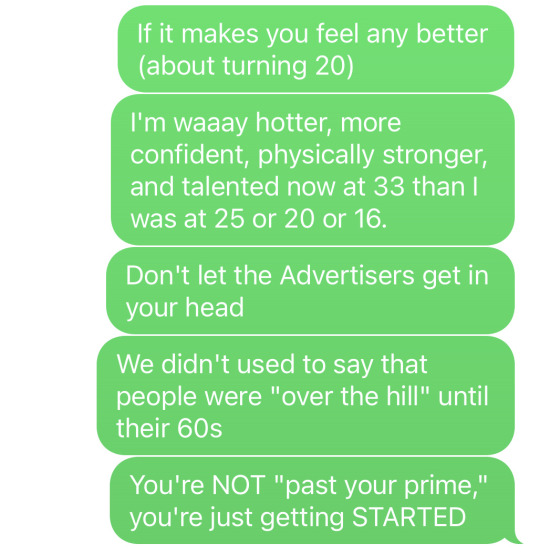
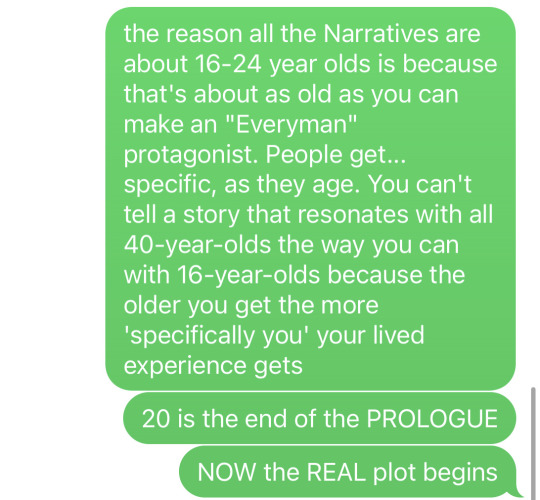
#troglodyte thoughts#free range sustainable shitpost#anti doomscroll patrol#fuck advertisers#fuck youth worship#you’re just getting started sweetie#there’s so much plot left to uncover
145K notes
·
View notes
Text
Growth capitalism is a deranged fantasy for lunatics.
Year 1, your business makes a million dollars in profit. Great start!
Year 2, you make another million. Oh no! Your business is failing because you didn't make more than last year!
Okay, say year 2 you make $2 mil. Now you're profitable!
Then year 3 you make $3 mil. Oh no! Your business is failing! But wait, you made more money than last year right? Sure, but you didn't make ENOUGH more than last year so actually your business is actively tanking! Time to sell off shares and dismantle it for parts! You should have made $4 mil in profit to be profitable, you fool!
If you're not making more money every year by an ever-increasing exponent, the business is failing!
Absolute degenerate LUNACY
#eat the rich#fuck capitalism#capitalists make great mulch#they're a sustainable and eco-friendly source of pig feed and fertilizer#blog together queue alone
52K notes
·
View notes
Text


benandjerrys on Instagram
#ben and jerrys#ben and jerry's ice cream#election 2024#project 2025#black lives matter#blm movement#hope#hopecore#united states#us politics#donald trump#elon musk#gen z#positivity#happiness#climate justice#climate change#greta thunberg#save palestine#save our planet#sustainability#vegan#vegetarian#liberals#booklr#bookworm#banned books#blacklivesmatter#leftist#leftism
12K notes
·
View notes
Text
So. Storytime for guerilla gardeners and solarpunk enthusiasts. This story comes to me 3rd hand but I believe the basic shape of it is true, even if details may be off.
So there’s this guy who lives in my parents’ town. Wanted to have a pocket farm but lives on an urban lot in a small city instead because y’know jobs and stuff. He could definitely get a few raised beds in the backyard but nothing all that impressive and the front yard is on a very busy road with the expectation that it’ll look reasonably traditional (plus planting food by busy roads isn’t always a good idea).
However
After he’s lived there for a while, he realizes his neighbors are all older people who maybe have more challenges taking care of their yards than they used to. So he goes to his next door neighbor and offers a deal: I’ll mow and maintain your front yard for free if you let me knock down the fences between our backyards and plant them both with food. And you’ll get a cut of the produce.
Presumably the neighbor already knew and trusted this guy because he said yes. So he starts mowing and maintaining his and his neighbor’s front yards and planting food in their now-shared backyards. After a season or two this goes well enough that the next neighbor down the street asks if he can be in on this too.
So now there’s 3 front yards to mow and three backyards full of produce. And it keeps going from there. Dude gets a rider lawnmower and does everyone’s front yards, and meanwhile he’s maintaining an entire block’s worth of produce in the back. His yields got so high that he was able to start offering boxes of produce outside of the block’s residents too. This is how I heard of him: my parents’ next door neighbors were picking up a regular box of produce from him.
I love a couple of things about this story:
Offering to maintain people’s front yards for them allows baby boomers to feed their thirst for keeping up appearances while still getting food production into the neighborhood
As homeowners age offering services like this is legitimately good community building
BLOCK-LONG POCKET FARM
These exact circumstances might not be replicable everywhere, but I love thinking about how these principles could be applied.
11K notes
·
View notes
Text
Even the thrift shops are filled with fast fashion now

20K notes
·
View notes
Text
56K notes
·
View notes
Text
How to begin a sustainable way of life
This is a draft of something I've been writing for a couple months. It is mainly focused on the culture of the USA. Feel free to repost or otherwise share, with or without credit.
Do not tell people what to do—help them do it!
Give the gift of relief from being forced to engage in society’s unsustainable ways of life.
“People need to eat more plant-based foods.” ->Talk about your favorite recipes, give others recipes, cook for them, and grow vegetables and plants in your garden and give them away as gifts.
“People need to repair their clothes.” -> Offer to repair others’ clothes, and teach people how to repair their clothes.
“People need to buy less clothes.” -> Give them old clothes that you don’t want, help them repair their clothes
“People need to buy less plastic stuff.” -> Learn to make things that can serve the same purpose, such as baskets, and give them as gifts. Let people borrow things you own so they don’t have to buy their own.
“People need to stop using leafblowers and other gas-guzzling machinery.” -> Offer to rake the leaves. You can use them as compost in your own garden.
“People need to be more educated about nature.”-> Learn about nature yourself. Tell people about nature. Be open about your love of creatures such as snakes, spiders, and frogs. Do not show awareness that this could be strange. You are not obligated to quiet down your enthusiasm for creepy crawlies to demonstrate awareness that it is weird. Point out at every opportunity how these animals are beneficial.
“People need to use cars less.” -> Offer rides to others whenever you must go somewhere. Whenever you are about to go to the store, ask your neighbor or your friend who lives along the way, “Is there anything you need from the store?”
You cannot control others’ behaviors, but you can free them from being controlled.
If you think to yourself, “But this would be so difficult to do!” ask yourself WHY? Why does your society coerce you into less sustainable ways of living, forcing you to consume excessively? After thinking about this, consider that it is less simple and easy than you thought to make more sustainable choices, so why would you judge others for not doing it?
Do not act alone—act with others!
Environmentally friendly behaviors that can be done alone, without collaborating with or consulting another person, are the least powerful of all. Whenever an “environmentally friendly” behavior is suggested, figure out “How can I give this as a gift?” or “How can I make this possible on the level of a whole community?”
“Personal choices” do not work because every single person has to make them individually. If you are focused on making your own personal choice, you are not focused on others. If you are not focused on others, you are not helping them. If nobody is helping each other, most people won’t be able to make the “personal choice.”
You inherently share an ecosystem with your neighbors
Start with your neighbors, the people physically close to you. You live on the same patch of land, containing roots from the same plants and trees. You can speak to them face to face without traveling, which means you can easily bring them physical things without using resources to travel.
Always talk to your neighbors and be friendly with them. Offer them favors unprompted and tell them about how your garden is doing. Do not be afraid to be annoying—a slightly annoying neighbor who is helpful, kind, and can be relied upon for a variety of favors or in times of need is a necessary and inevitable part of a good community. If you make the effort to be present in somebody’s life, they will have to put up with you on some occasions, but that is just life. We cannot rely on each other if we do not put up with each other.
Simply spending time with someone influences them for good
Every hour you spend outside with your neighbor is an hour your neighbor doesn’t spend watching Fox News. Every hour you spend talking with someone and interacting with them in the real world, eating real food and enjoying your real surroundings, is an hour you don’t spend only hearing a curated picture of what reality is like from social media.
Isolation makes it easy for people to become indoctrinated into extremist beliefs. When someone spends more time alone, watching TV, Youtube, or scrolling social media, than they do with others, their concept of what other people are like and what the world is like comes more from social media than real life. TV and online media are meant to influence you in a specific way. Simply restricting the access these influences have to yourself and others is helpful.
A garden is the source of many gifts
If you grow a garden, you can give your neighbors and friends the gift of food, plants, and crafted objects. This is one of the foundational ways to form community. When you give food, you provide support to others. When you give plants, you are encouraging and teaching about gardening. It is even better when you give recipes cooked from things you grew, or items crafted from things you grew. You can also give the gift of knowledge of how to grow these plants, cook these recipes, or craft these objects.
More on gift-giving
Some people are uncomfortable with receiving items or services as gifts. They want to feel like they are giving something back, instead of having obligation to return the favor hanging over them.
It can help to ask a simple favor that can be easily fulfilled. People generally like the feeling of helping someone else.
When you give someone a gift, it can help to say something like “Oh, I have too many of this thing to take care of/store/eat myself! Do you think you could take some?” This makes your neighbor feel like they are helping you.
When allowing others to borrow items, you might not get them back. Don’t worry about that. It just means the item found a place where it was needed the most. You can ask about the item if you think it might have been forgotten, and this can create an opportunity for a second meeting. But don’t press.
If the person you give to insists upon some form of payment, this is a good opportunity to negotiate a trade.
Ask to be given compostable or recyclable things
Ask your neighbor to save compostable scraps, biodegradable cardboard and paper products, and any other items that might be put to use. Use them in your own compost pile. Or, start a compost pile at the edge of the yard where you both can add to it. Remember that “wet” compost like vegetable and fruit bits needs to be mixed with twice as much of “dry” and “woody” compost like cardboard, leaves, small twigs, paper and wood bits.
Use the front yard for gardening
Overcome the cultural norm that the front yard is only decorative. Use the front yard for gardening so you can be seen by others enjoying your garden, and others can witness the demonstration of the possibilities of land. In the front yard, anything you do intentionally with your land can be witnessed. It also makes you a visible presence in your community.
Grow staple foods
Don’t just grow vegetables that cannot be the core component of a meal themselves. Grow potatoes, dry beans, black eyed peas and other nourishing, calorie-dense foods. Grow the ingredients of meals. You could even build a garden around a recipe.
Invite neighbors and friends over to eat food made from things you grew
Be sure to send them home with leftovers.
Grow plants for baskets
Containers are one of the fundamental human needs. If we had more containers, we wouldn’t need plastic so much. You can learn to make baskets, and to grow plants that provide the raw materials for baskets.
If someone rakes their leaves, ask to have the leaves
If you see someone putting leaves in bags, don’t be afraid to ask if you can have the leaves. More likely than not they will be happy to agree.
Collaborate with neighbors to plant things in the no-man’s-land of the property line
In the border land between your neighbor’s yard and your yard, it is almost always just mowed grass because no one can plant anything without it affecting their neighbor. But these border lands add up to a lot of space. It would be much better if you talked to your neighbor about what would be nice to plant there, and together created a plan for that space.
Give others the freedom to wander
Make it clear that you will not get mad if the neighbor’s kids play in your yard or run across it. Invite the neighbors onto your land as much as possible. Tell them they are allowed to spend time in a favored spot whenever they would like.
The power of the hand-made sign
If there is a yard sale, you always know about it because of the hand-drawn signs placed around. Therefore, a cookout or unwanted item exchange can be announced the same way. In rural areas I have seen hand-made signs that say: FIREWOOD or WE BUY GOATS or EGGS. This is one of the few technologies of community that remain in the USA. If someone who looks to buy and sell can put up a hand-made sign, why shouldn’t you?
Religious people or people with strong political opinions like to put signs everywhere. If they have the confidence and courage to do so, why shouldn’t you?
So if there is a message you would like everyone to see, use the simple power of the hand-made sign. Proclaim “BEE FRIENDLY ZONE!” above your pollinator garden with all the confidence of a religious fundamentalist billboard. Announce to the world, “VEGETABLES FREE TO ALL—JUST ASK!” “WE TAKE LEAVES—NO PESTICIDES.” Instead of YARD SALE, or perhaps in conjunction with YARD SALE, you can write, PLANT EXCHANGE or SEED SWAP or CLOTHING SWAP. Who can stop you?
Someone has to do it for society to change
Some of these ideas might be eccentric, strange, or even socially unacceptable, but there is no way to change what is normal except to move against it. Someone has to be weird. It might as well be you.
12K notes
·
View notes
Text
"A Scottish field once home to mono-crop barley has become a pollinator’s paradise after intervention from a local trust saw bumblebee numbers increase 100-fold.
Entitled Rewilding Denmarkfield, and run by the Bumblebee Conservation Trust, the project has also seen a sharp increase in the number of species passing through the rolling meadows after they were reclaimed by dozens of wildflower species.
The area north of Perth is about 90 acres in size, and surveys of bumblebees before the project began rarely recorded more than 50. But by 2023, just two years of letting “nature take the lead” that number has topped 4,000, with the number of different bee species doubling.
“This superb variety of plants attracts thousands of pollinators. Many of these plants, such as spear thistle and smooth hawk’s beard, are sometimes branded as ‘weeds’. But they are all native species that are benefiting native wildlife in different ways,” Ecologist Ellie Corsie, who has been managing the project since it began in 2021, said.
“Due to intensive arable farming, with decades of plowing, herbicide, and pesticide use, biodiversity was incredibly low when we started. Wildlife had largely been sanitized from the fields. Rewilding the site has had a remarkable benefit.”
Similar increases have been recorded in the populations of butterflies, with a tripling in the number of these insects seen on average during a ramble through the field.
The numbers of both insects are now so high that Rewilding Denmarkfield offers bee and butterfly safaris to visitors.
Local residents told the Scotsman that on spring and summer days, the field is awash with color, and hums with the sounds of bees and birds. Even as multiple housing developments expand around the Denmarkfield area, the field is a haven for wildlife."
-via Good News Network, December 2, 2024
#bees#bumblebee#save the bees#pollinators#conservation#sustainability#hope posting#insects#entomology#rewilding#scotland#europe#good news#hope
9K notes
·
View notes
Text
Homemaking, gardening, and self-sufficiency resources that won't radicalize you into a hate group

It seems like self-sufficiency and homemaking skills are blowing up right now. With the COVID-19 pandemic and the current economic crisis, a lot of folks, especially young people, are looking to develop skills that will help them be a little bit less dependent on our consumerist economy. And I think that's generally a good thing. I think more of us should know how to cook a meal from scratch, grow our own vegetables, and mend our own clothes. Those are good skills to have.
Unfortunately, these "self-sufficiency" skills are often used as a recruiting tactic by white supremacists, TERFs, and other hate groups. They become a way to reconnect to or relive the "good old days," a romanticized (false) past before modern society and civil rights. And for a lot of people, these skills are inseparably connected to their politics and may even be used as a tool to indoctrinate new people.
In the spirit of building safe communities, here's a complete list of the safe resources I've found for learning homemaking, gardening, and related skills. Safe for me means queer- and trans-friendly, inclusive of different races and cultures, does not contain Christian preaching, and does not contain white supremacist or TERF dog whistles.
Homemaking/Housekeeping/Caring for your home:
Making It by Kelly Coyne and Erik Knutzen [book] (The big crunchy household DIY book; includes every level of self-sufficiency from making your own toothpaste and laundry soap to setting up raised beds to butchering a chicken. Authors are explicitly left-leaning.)
Safe and Sound: A Renter-Friendly Guide to Home Repair by Mercury Stardust [book] (A guide to simple home repair tasks, written with rentals in mind; very compassionate and accessible language.)
How To Keep House While Drowning by KC Davis [book] (The book about cleaning and housework for people who get overwhelmed by cleaning and housework, based on the premise that messiness is not a moral failing; disability and neurodivergence friendly; genuinely changed how I approach cleaning tasks.)
Gardening
Rebel Gardening by Alessandro Vitale [book] (Really great introduction to urban gardening; explicitly discusses renter-friendly garden designs in small spaces; lots of DIY solutions using recycled materials; note that the author lives in England, so check if plants are invasive in your area before putting them in the ground.)
Country/Rural Living:
Woodsqueer by Gretchen Legler [book] (Memoir of a lesbian who lives and works on a rural farm in Maine with her wife; does a good job of showing what it's like to be queer in a rural space; CW for mentions of domestic violence, infidelity/cheating, and internalized homophobia)
"Debunking the Off-Grid Fantasy" by Maggie Mae Fish [video essay] (Deconstructs the off-grid lifestyle and the myth of self-reliance)
Sewing/Mending:
Annika Victoria [YouTube channel] (No longer active, but their videos are still a great resource for anyone learning to sew; check out the beginner project playlist to start. This is where I learned a lot of what I know about sewing.)
Make, Sew, and Mend by Bernadette Banner [book] (A very thorough written introduction to hand-sewing, written by a clothing historian; lots of fun garment history facts; explicitly inclusive of BIPOC, queer, and trans sewists.)
Sustainability/Land Stewardship
Braiding Sweetgrass by Robin Wall Kimmerer [book] (Most of you have probably already read this one or had it recommended to you, but it really is that good; excellent example of how traditional animist beliefs -- in this case, indigenous American beliefs -- can exist in healthy symbiosis with science; more philosophy than how-to, but a great foundational resource.)
Wild Witchcraft by Rebecca Beyer [book] (This one is for my fellow witches; one of my favorite witchcraft books, and an excellent example of a place-based practice deeply rooted in the land.)
Avoiding the "Crunchy to Alt Right Pipeline"
Note: the "crunchy to alt-right pipeline" is a term used to describe how white supremacists and other far right groups use "crunchy" spaces (i.e., spaces dedicated to farming, homemaking, alternative medicine, simple living/slow living, etc.) to recruit and indoctrinate people into their movements. Knowing how this recruitment works can help you recognize it when you do encounter it and avoid being influenced by it.
"The Crunchy-to-Alt-Right Pipeline" by Kathleen Belew [magazine article] (Good, short introduction to this issue and its history.)
Sisters in Hate by Seyward Darby (I feel like I need to give a content warning: this book contains explicit descriptions of racism, white supremacy, and Neo Nazis, and it's a very difficult read, but it really is a great, in-depth breakdown of the role women play in the alt-right; also explicitly addresses the crunchy to alt-right pipeline.)
These are just the resources I've personally found helpful, so if anyone else has any they want to add, please, please do!
#homemaking#homemaking resources#gardening#urban gardening#self sufficiency#self sufficient living#sustainability#sustainable living#homesteading#nontrad homemaker#nontrad housewife#urban homesteading#solarpunk#cottagecore#kitchen witch#kitchen witchcraft#crunchy to alt right pipeline#book rec#book recommendations#resource#long post#mine#racism tw#racism mention#transphobia tw#transphobia mention
32K notes
·
View notes
Text
my family is lucky enough to own a 26 acre mountain property, log cabin and all. Most people would go up there and think that it is fairly pristine nature. There’s the cabin, and a few dirt roads for 4-wheelers, but the surrounding woods look untouched.
But we actually carefully maintain that nature. We cut down the deadfall. We pull invasive plants. We trim the elderberry bushes. We get more animals than almost anywhere else on the mountain because we put up salt licks and water troughs.
some of these same things are true of national parks. A lot of places that you think of as “untouched wilderness” are influenced heavily by human care and maintenance. And this isn’t a bad thing. We are animals too. In many ways, our ecosystems depend on us to keep them healthy. Many “wild” plants that are useful for food or building materials are actually semi-domesticated because indigenous groups cared for them and encouraged their growth so they do better with human care.
we have a place in nature. We just need to be conscious of our actions.
EDIT: since this post took off, I thought I should add some sources
Also a disclaimer that I am not indigenous or an ecologist. I am putting time and effort into learning, but I am not an expert.
12K notes
·
View notes
Text
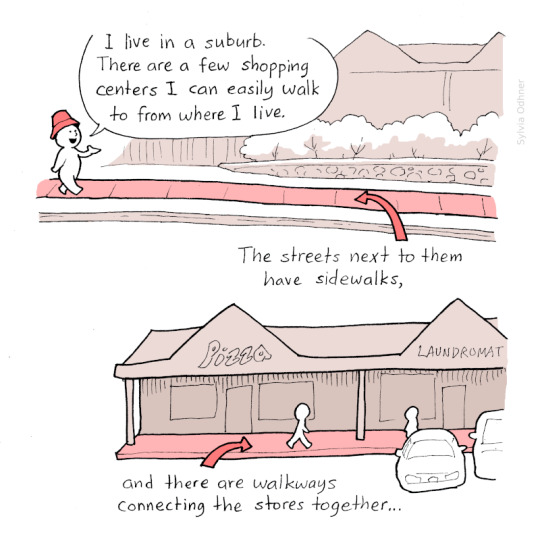
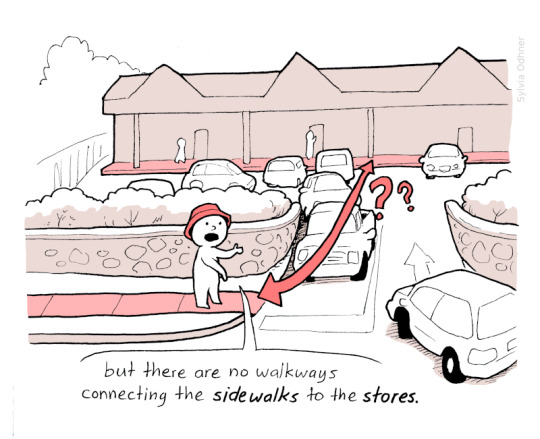
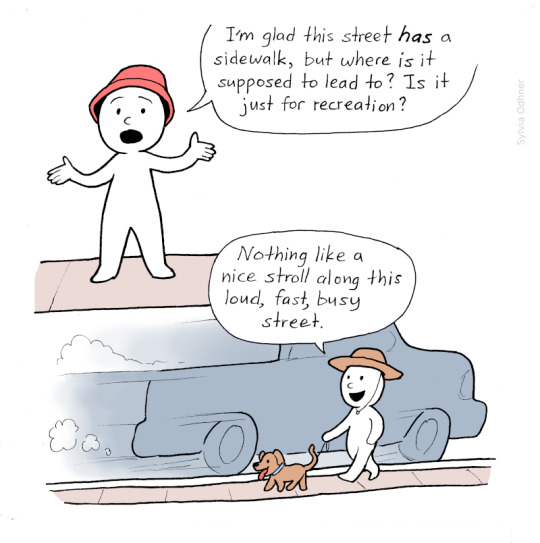
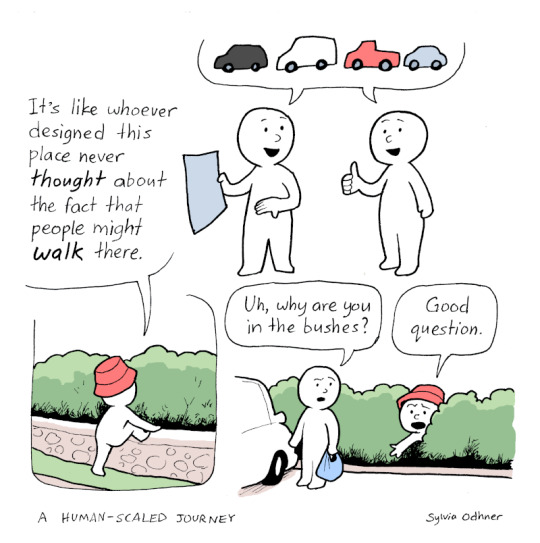
The Shopping Center Disconnect
42K notes
·
View notes
Text
Genocide experts warn that India is about to genocide the Shompen people
Who are the Shompen?
The Shompen are an indigenous culture that lives in the Great Nicobar Island, which is nowadays owned by India. The Shompen and their ancestors are believed to have been living in this island for around 10,000 years. Like other tribes in the nearby islands, the Shompen are isolated from the rest of the world, as they chose to be left alone, with the exception of a few members who occasionally take part in exchanges with foreigners and go on quarantine before returning to their tribe. There are between 100 and 400 Shompen people, who are hunter-gatherers and nomadic agricultors and rely on their island's rainforest for survival.
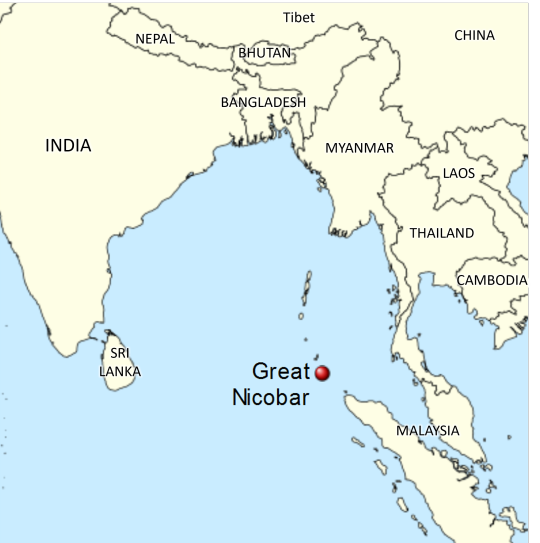
Why is there risk of genocide?
India has announced a huge construction mega-project that will completely change the Great Nicobar Island to turn it into "the Hong Kong of India".
Nowadays, the island has 8,500 inhabitants, and over 95% of its surface is made up of national parks, protected forests and tribal reserve areas. Much of the island is covered by the Great Nicobar Biosphere Reserve, described by UNESCO as covering “unique and threatened tropical evergreen forest ecosystems. It is home to very rich ecosystems, including 650 species of angiosperms, ferns, gymnosperms, and bryophytes, among others. In terms of fauna, there are over 1800 species, some of which are endemic to this area. It has one of the best-preserved tropical rain forests in the world.”
The Indian project aims to destroy this natural environment to create an international shipping terminal with the capacity to handle 14.2 million TEUs (unit of cargo capacity), an international airport that will handle a peak hour traffic of 4,000 passengers and that will be used as a joint civilian-military airport under the control of the Indian Navy, a gas and solar power plant, a military base, an industrial park, and townships aimed at bringing in tourism, including commercial, industrial and residential zones as well as other tourism-related activities.
This project means the destruction of the island's pristine rainforests, as it involves cutting down over 852,000 trees and endangers the local fauna such as leatherback turtles, saltwater crocodiles, Nicobar crab-eating macaque and migratory birds. The erosion resulting from deforestation will be huge in this highly-seismic area. Experts also warn about the effects that this project will have on local flora and fauna as a result of pollution from the terminal project, coastal surface runoff, ballasts from ships, physical collisions with ships, coastal construction, oil spills, etc.
The indigenous people are not only affected because their environment and food source will be destroyed. On top of this, the demographic change will be a catastrophe for them. After the creation of this project, the Great Nicobar Island -which now has 8,500 inhabitants- will receive a population of 650,000 settlers. Remember that the Shompen and Nicobarese people who live on this island are isolated, which means they do not have an immune system that can resist outsider illnesses. Academics believe they could die of disease if they come in contact with outsiders (think of the arrival of Europeans to the Americas after Christopher Columbus and the way that common European illnesses were lethal for indigenous Americans with no immunization against them).
And on top of all of this, the project might destroy the environment and the indigenous people just to turn out to be useless and sooner or later be abandoned. The naturalist Uday Mondal explains that “after all the destruction, the financial viability of the project remains questionable as all the construction material will have to be shipped to this remote island and it will have to compete with already well-established ports.” However, this project is important to India because they want to use the island as a military and commercial post to stop China's expansion in the region, since the Nicobar islands are located on one of the world's busiest sea routes.
Last year, 70 former government officials and ambassadors wrote to the Indian president saying the project would “virtually destroy the unique ecology of this island and the habitat of vulnerable tribal groups”. India's response has been to say that the indigenous tribes will be relocated "if needed", but that doesn't solve the problem. As a spokesperson for human rights group Survival International said: “The Shompen are nomadic and have clearly defined territories. Four of their semi-permanent settlements are set to be directly devastated by the project, along with their southern hunting and foraging territories. The Shompen will undoubtedly try to move away from the area destroyed, but there will be little space for them to go. To avoid a genocide, this deadly mega-project must be scrapped.”
On 7 February 2024, 39 scholars from 13 countries published an open letter to the Indian president warning that “If the project goes ahead, even in a limited form, we believe it will be a death sentence for the Shompen, tantamount to the international crime of genocide.”
How to help
The NGO Survival International has launched this campaign:
From this site, you just need to add your name and email and you will send an email to India's Tribal Affairs Minister and to the companies currently vying to build the first stage of the project.
Share it with your friends and acquittances and on social media.
Sources:
India’s plan for untouched Nicobar isles will be ‘death sentence’ for isolated tribe, 7 Feb 2024. The Guardian.
‘It will destroy them’: Indian mega-development could cause ‘genocide’ and ‘ecocide’, says charity, 8 Feb 2024. Geographical.
Genocide experts call on India's government to scrap the Great Nicobar mega-project, Feb 2024. Survival International.
The container terminal that could sink the Great Nicobar Island, 20 July 2022. Mongabay.
[Maps] Environmental path cleared for Great Nicobar mega project, 10 Oct 2022. Mongabay.
#shompen#genocide#stop genocide#india#indigenous#indigenous peoples#indigenous rights#human rights#anthropology#stateless nations#end occupation#andaman and nicobar islands#nicobar islands#great nicobar#💬#asia#geopolitics#ecocide#sustainability
23K notes
·
View notes
Text
Computers are very simple you see we take the hearts of dead stars and we flatten them into crystal chips and then we etch tiny pathways using concentrated light into the dead star crystal chips and if we etch the pathways just so we can trick the crystals into doing our thinking for us hope this clears things up.
105K notes
·
View notes